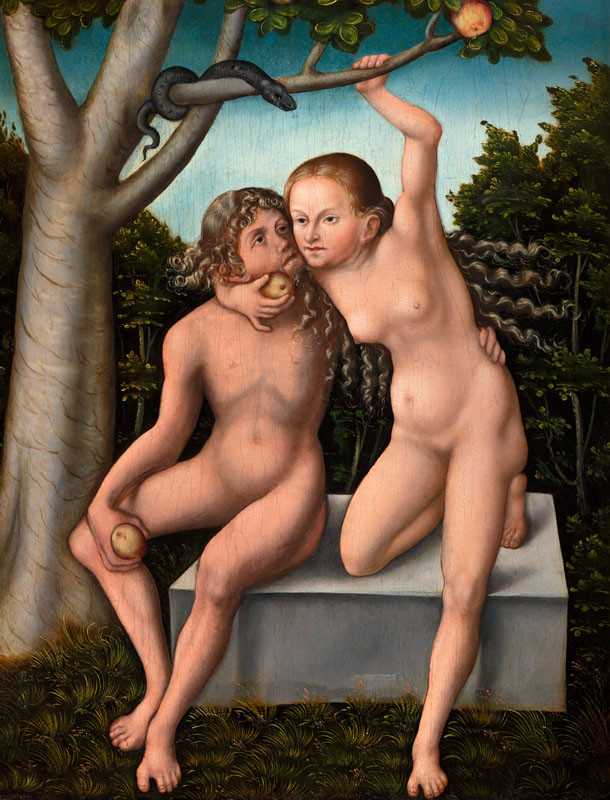
The very first glance betrays the fact that the author of the painting came on the formal side from the work of Lucas Cranach the Elder. The different typology of the faces and the soft and articulated modelling of the bodies, however, separate it strikingly from derivative works painted according to Cranach. The relatively original handwriting and the physiognomy of Adam (including the characteristically conceived painting of the hair, where the locks around the face are typically lightened by paler streaks) lead us to Anton Heusler, who was active in Annaberg. The Old Testament theme of the Original Sin (Genesis 3,1-7) often handled by Cranach himself and the painters of his circle, was resolved inventively by Heusler. He "placed" Adam on a stone plinth (this also appears in Cranach's work, but in the depiction of Caritas), in his hand he holds the apple plucked from the Tree of Knowledge. Eve, portrayed with flowing hair, kneels towards him in a complicated move, winds her right arm round his neck and holds a second apple to his lips. Both actors in the scene are completely naked, lacking even the fig leaves with which Adam and Eve covered themselves. In the background stretches a thick forest, forming a sort of backdrop, in front of which the couple is placed. The painter simplified the scene to the maximum and, apart from the trees and the highly important serpent, excluded all other flora and fauna and even the other motifs that might distract attention from the actions of our ancestors. The result of such a concept is an effective composition, progressive for its time. Although nothing is known of the original provenance of this panel (it is first demonstrably recorded only in the Valdštejn inventory of 1823), it most probably fulfilled the function of a hanging picture painted for a private client.
